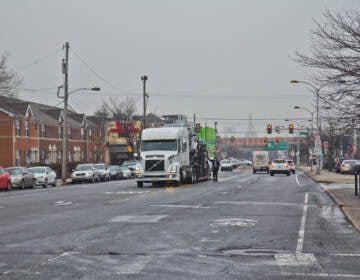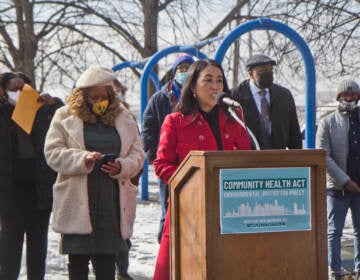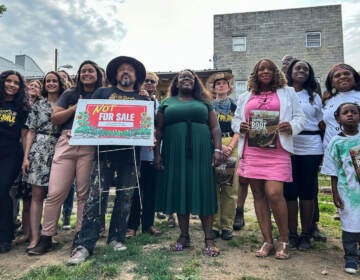‘It’s called respect’: Washington Avenue drama plays out amid the tensions of a gentrifying neighborhood
It’s too soon to say how Washington Avenue will ultimately look, and what impact it will have on the neighborhoods surrounding it.
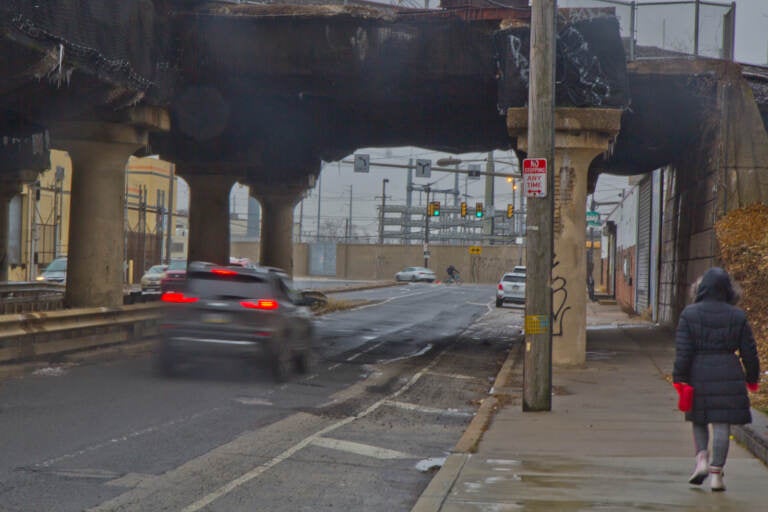
Washington Avenue in South Philadelphia is getting a redesign from 4th Street to Gray’s Ferry Avenue. (Kimberly Paynter/WHYY)
Madeline Shikomba lived a few blocks north of Washington Avenue for nearly 50 years, before moving to a retirement community near Fairmount Park in 2020.
“I didn’t want to move. I loved my house,” she said. “But I couldn’t climb the steps anymore, do a lot of things, so I decided I had to go. But my heart is still there.”
When Shikomba bought her house on Madison Square in the 1970s, she said she was unable to get a mortgage because the area had been redlined (nearly all of South Philly was classified as “hazardous” by the Homeowners’ Loan Corporation in the 1930s). So her realtor backed her for a personal loan.
Shikomba’s sister lived on her block, and would help organize community events with art, food, and vendors.
“We did a lot of things in terms of making sure that the block was taken care of,” Shikomba said. “It was a garden down the middle of the street and everybody took care of the garden — mostly everybody … So the block always looked pretty.”
Back when Shikomba moved to the Washington Avenue area, she said, nearly everyone in the neighborhood was Black. Since then, the neighborhood has changed. Census data show the area’s Black population decreased from around 57% to just 37% between 2011 and 2019, while the white population ballooned. According to Zillow, home values in the 19146 ZIP code where Shikomba lived have grown about 72% in the last 10 years — slightly more than the citywide average.
Shikomba, still president of the North of Washington Avenue Coalition, a Registered Community Organization, is one of the most vocal opponents of the city’s plan to narrow the five-lane thoroughfare — which proponents argue would make it safer for pedestrians and cyclists. Shikomba worries the plan is a symptom of gentrification — and could speed change to the neighborhood she loves.
A botched public engagement process
After what officials characterized as an extensive public engagement process, the city released in 2020 a “final design decision” for the Washington Avenue reconfiguration between Grays Ferry Avenue and 4th Street: mostly three lanes, with one lane in each direction plus a central turning lane, and bike lanes protected by barriers. The decision rested in part on the results of an online survey of more than 5,000 city residents, a majority of whom said they preferred the three-lane solution.
But the next year, officials began quietly meeting with local Registered Community Organizations (RCOs), residents, businesses, and advocacy groups such as the Bicycle Coalition of Greater Philadelphia and the urbanist PAC 5th Square. Officials said with public engagement during the height of the pandemic “mainly digital,” it did not “fulfill equity goals of the Administration.” The city’s Office of Transportation, Infrastructure and Sustainability (OTIS) became aware that some residents were underrepresented in the survey.
“They tended to be people who were located in neighborhoods where there’s a certain amount of gentrification which is looming over them — so folks who are longer-term residents, more African Americans, more older resident,” Deputy Managing Director for Transportation, Infrastructure, and Sustainability Mike Carroll said in an interview with PlanPhilly in December.
Then on Saturday, Feb. 5, OTIS announced a new direction for Washington Avenue, reached after these additional conversations: the city will no longer consider the three-lane solution, and will choose between a largely four-lane design, which includes a wider section around Broad Street, and a hybrid design, where nearly half of the project area would be reduced to three lanes and the rest would be wider. The road will also be repaved this year.
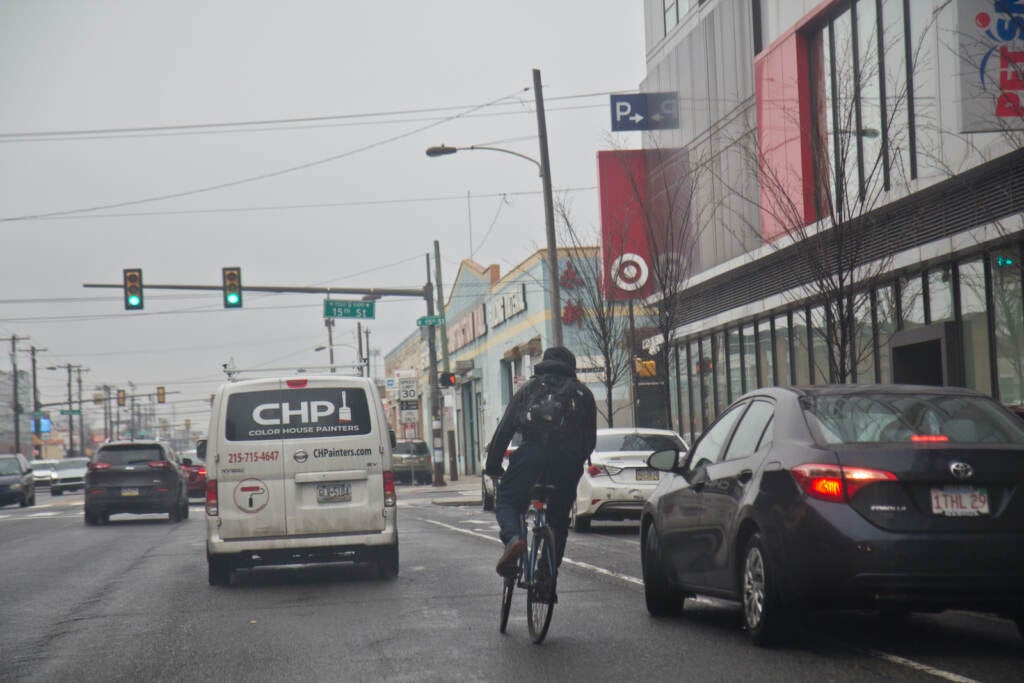
Though the hybrid design the city is considering is similar to the initial decision, bicycle and transportation advocates were enraged by the city’s about-face. Although the so-called three-lane design would also have included small sections of four and five lanes, both of the current options still include protected bike lanes.
Annette Randolph participated in OTIS’ in-person meetings in 2021. She has lived near Washington Avenue for more than six decades — and currently resides in the house where her great-grandmother lived on Ellsworth Street.
A block captain, Randolph did not find out about the Washington Avenue improvement project until she spoke with her RCO leader in August 2021 — nearly a year after the city announced its “final design decision.” Later, Randolph helped lead protests that blocked off lanes of Washington Avenue, in opposition to any narrowing of the road. She thought OTIS’ three-lane proposal would cause traffic pile-ups and problems for emergency services.
“If there is an accident that happens, how are people going to get by?” she said.
Randolph said initially, “newcomers” to the neighborhood had more power in the city’s planning process.
“Nobody came to people who were already here,” Randolph said. “People have forgotten the word: respect. That is something that nobody is thinking about. It’s called respect.”
Carroll, who heads OTIS, admits the agency made a mistake.
“People who are Black and brown, people who are in lower-income situations — there’s a pattern in transportation — only get asked or spoken to after decisions are made,” Carroll said in an interview after the decision was announced. “Anyone who knows anything about the history of urban transportation cannot argue with that fact. And so in a profound way, this was replicating that process.”
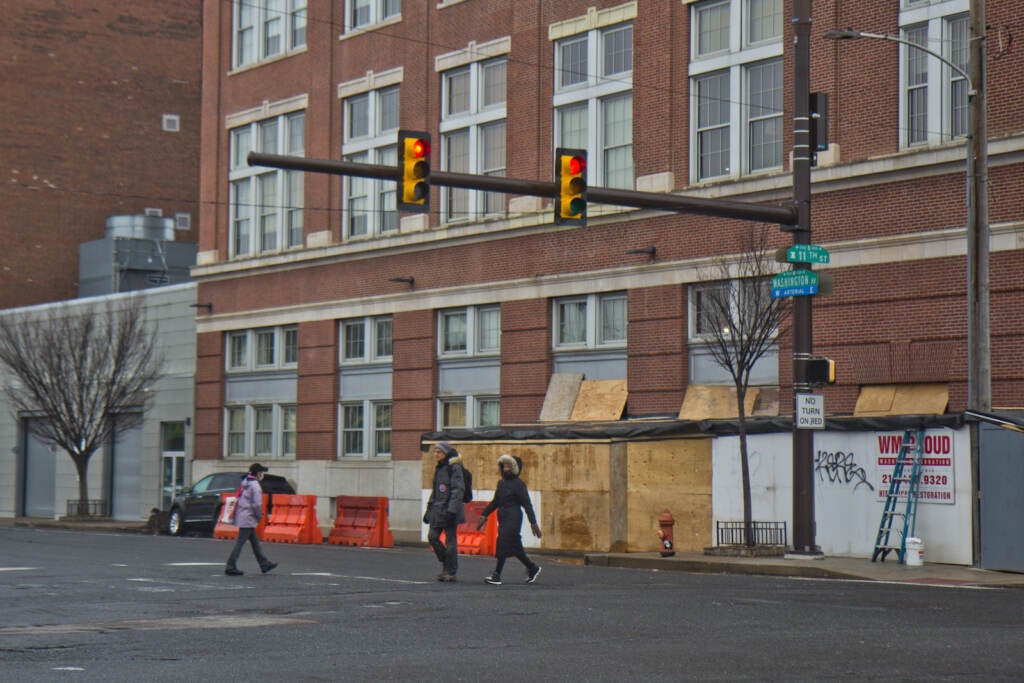
The city first became aware of opposition to the project during its initial phase of public outreach in 2014, Carroll said. Officials heard about concerns surrounding inclusivity of the online survey in the late spring of 2020 — but were so pleased with the response numbers that they were able to temporarily look past them.
“Thousands of people advocating for a road diet is not something that we had experienced before,” Carroll said. “I think the thing that we didn’t reflect closely on … is the disparity between who was saying yes and who really wasn’t saying anything.”
But OTIS pushed ahead with the three-lane solution, releasing it as the “final design decision” in September of 2020. Carroll said the process had “momentum” — and felt confident OTIS could “talk through” the conflict and explain to those opposing the three-lane design why it was the best thing to do.
“It was really only in doing that work that people were saying things back to me and our team that we really needed to reflect on.”
Some of these points included the role of Washington Avenue as a crucial east-west artery, the way businesses are forced to take deliveries, and the risk of traffic being diverted onto parallel residential streets, Carroll said.
It’s ultimately hard to say how preferences for the design of Washington Avenue break down by race or income, because the city’s survey did not include any demographics questions.
Different visions for Washington Avenue
Today, Washington Avenue is a five-lane road — with two lanes in each direction and a turning lane in the middle. It’s home to a wide variety of restaurants, old construction-oriented businesses, big box stores, and no-frills storage yards. It touches the Italian Market and Little Saigon. Vacant lots and modest rowhomes coexist with towering luxury apartment buildings. It’s hard to find parking, and cars and trucks sometimes double park, blocking travel lanes. Pedestrians dart across the road and the occasional bicyclist speeds by.
A group calling itself the Save Washington Avenue Coalition — including Shikomba and Randolph — sent a letter to City Council last month that argued narrowing Washington Avenue would fuel gentrification.
“The move to have Washington Avenue favor pedestrian-friendly options over commercial traffic prioritizes the more affluent population while ignoring the needs and concerns of long-term residents and businesses,” it read.
The group likes Washington Avenue how it is — a partially industrial, vehicle-oriented “highway” — and worry a narrower Washington Avenue will mean less space for trucks delivering goods to businesses. Members also worry this would push truck traffic onto narrow residential streets nearby.
“Any change in lanes will result in the loss of some businesses in Washington,” Shikomba said. “This would be happy to the developers. … They are anxious to turn Washington Avenue into luxury apartments and homes.”
The three-lane configuration could force longtime businesses like Colonial Cava Marble and Granite to move away, said business manager Rita Bekas.
“No one’s going to bicycle here,” Bekas said. “People who come here need a pickup truck.”
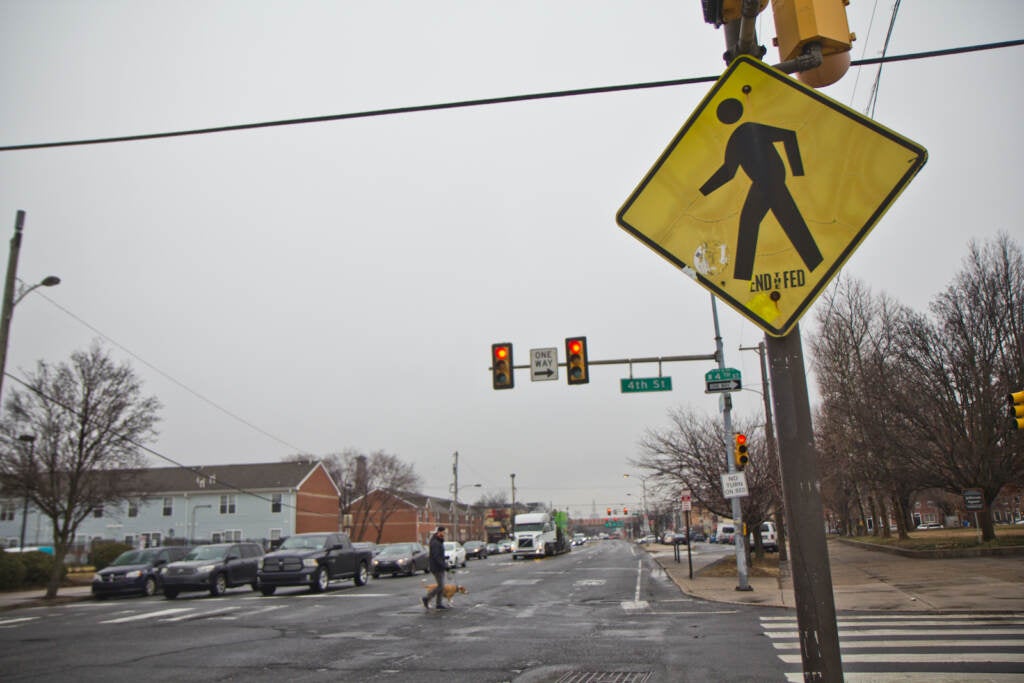
But Bekas likes the four-lane design OTIS is currently considering, and thinks it would beautify the street while allowing businesses to function. She’s not alone.
For years Tom Donatucci, managing partner of the Washington Avenue Property Owners Association, has been part of a movement to bring more residential and commercial development to the industrial portion of West Washington Avenue. He owns several properties on Washington Avenue — which now house a plumbing supply store, a hip brewery, and a veterinary hospital.
“Washington Avenue, it was always a blank tablet because … there was so much vacancy … and you had proximity to Center City,” he said. “It could be great.”
Sean Perkins, who walks his son to school across Washington Avenue, moved into the neighborhood two years ago from New Orleans. He thinks OTIS’ project presents an opportunity.
“I want to see something that’s safe for pedestrians that also encourages the growth of the city,” he said.
A petition started by a parent at the nearby Stanton school, along with neighborhood groups in Graduate Hospital, Bella Vista, Passyunk Square, East Passyunk Crossing, and Dickinson Square West, urged the city to move forward with the three-lane configuration to make the road safer, and garnered close to 3,000 signatures.
Shikomba raised two kids in her home near Washington Avenue, and said back then, the community asked the city repeatedly for a crossing guard, but never got one.
“Black lives didn’t matter,” she said. “For 60-some years, kids was crossing back and forth. But all of a sudden in 2020, Washington Avenue is a danger?”
Members of the Save Washington Avenue Coalition are pushing for safety improvements to the road, including more lighting, longer signal times for pedestrian crossings, ADA-compliant ramps at corners, speed bumps to slow traffic approaching 16th and 17th street intersections where school children cross, and changes to loading zones, curb cuts and parking regulations developed with the approval of business owners.
Shikomba’s RCO is also working on securing community benefits agreements with developers on Washington Avenue to guarantee affordable housing in the area.
5th Square and Bike Coalition are still pushing for the three-lane configuration. 5th Square has even started a fund to elect candidates who pledge to uphold the city’s Vision Zero goals, which received more than $10,000 in donations in just the first few days.
Tamar Fox, a 5th Square donor, said OTIS’ reversal did not feel like a “good faith effort to engage the whole community.”
“It really feels like it’s geared towards businesses and fears of gentrification,” she said. “I really share concerns about gentrification. … But I don’t think that a dangerous street really serves anyone.”
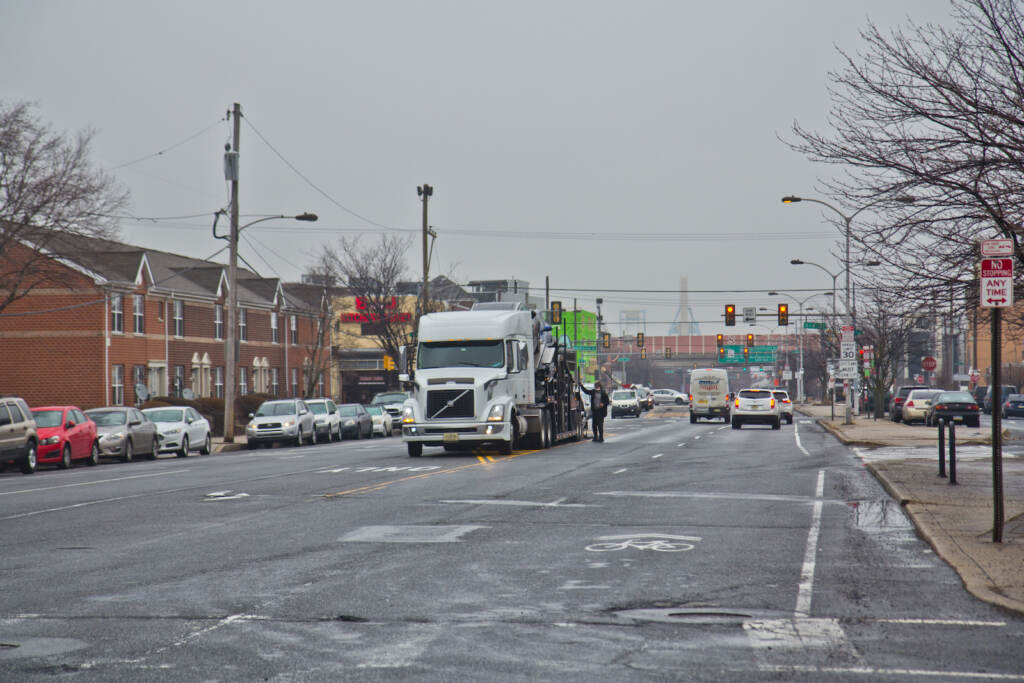
Fixing the process for next time
It’s too soon to say how Washington Avenue will ultimately look, and what impact it will have on the neighborhoods surrounding it. OTIS will hold a public open house on March 1 to present the finalized plans before construction. The city will not gather public input that day.
But members of the public will have an opportunity to weigh in on new parking and loading regulations as they go through City Council. Carroll said they are integral to the overall redesign.
Officials with OTIS say the city will also put in place ideas generated through the working group, including emergency vehicle signal preemption, to give ambulances and fire trucks green lights when responding to emergencies, concrete floating bus islands, and signs that show drivers their speed. The city is also requesting studies to install automated red light cameras at key intersections on Washington Avenue, and where requested, will study speed cushions on residential streets near Washington and install them “where appropriate.”
Despite the city’s pivot, Randolph feels officials are still not listening to long-time residents like her — because, she said, many residents are still unaware of the project.
In future planning efforts, Randolph wants the city to communicate better with block captains. She said phone calls work better than online surveys or emails in reaching long-time residents, since some do not have computers.
Officials with OTIS say they’ll apply lessons learned from the Washington Avenue debacle to future planning efforts. Carroll said the department plans to ask for respondents’ race and socioeconomic status on future surveys, even though “it’s sensitive.”
“Looking back, if we had done that in the first place, this would have probably popped up,” he said. “Everything that’s happened since then indicates … we would have caught it sooner.”
The department also plans to supplement online community engagement with in-person outreach (Carroll said the online-only efforts in 2020 were a first, necessitated by the pandemic). Officials also learned to dig into conflict early on, and not leave “consensus building” to the end of the process.
Ultimately, Carroll hopes to avoid repeating the mistakes of urban planners in decades past — for example, those who ripped neighborhoods apart by building interstates through them.
“Especially for projects that are focused on safety and multi-modal approaches, we often assume that we are the good guys, right?” Carroll said. “But that’s dangerous. It’s really dangerous to proceed from the perspective that, you know, since we’re doing so much good, we really don’t need to talk to people.”
Carroll admits the three-lane solution is the safest on Washington Avenue itself, but says it could push issues into surrounding neighborhoods. He’s confident other traffic calming measures can be used on Washington Avenue to achieve a safe result.
“It gives us a little bit of a margin for error in terms of the balance between safety issues we can address with other means and impacts to the neighborhood, impacts to the businesses that would be harder to manage if we really jumped in with a pure three-lane option,” he said.
 WHYY is one of over 20 news organizations producing Broke in Philly, a collaborative reporting project on solutions to poverty and the city’s push towards economic justice. Follow us at @BrokeInPhilly.
WHYY is one of over 20 news organizations producing Broke in Philly, a collaborative reporting project on solutions to poverty and the city’s push towards economic justice. Follow us at @BrokeInPhilly. 
Subscribe to PlanPhilly
WHYY is your source for fact-based, in-depth journalism and information. As a nonprofit organization, we rely on financial support from readers like you. Please give today.




